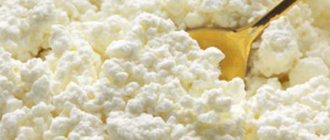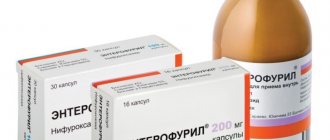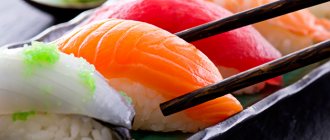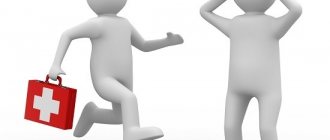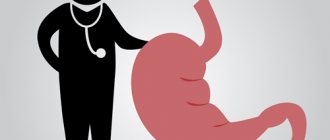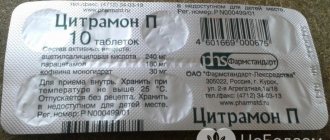Fish contains a huge amount of nutrients necessary for the body, such as trace elements, vitamins and fatty acids, which is why fish dishes are very popular. Despite this, eating fish should be taken seriously, because it quite often becomes the cause of food poisoning.
Ancient people mastered fishing more than 700 thousand years ago, as evidenced by scientific research data. Even at the dawn of humanity, “Homo erectus” learned to catch fish - moreover, he knew how to fry it over a fire. Did our ancestor know what to do in case of fish poisoning? The question remains open.
What do we, contemporaries, know about fish poisoning? Symptoms? Causes? How to act in such a situation? How long does it take for fish poisoning to appear?
What is poisoning
Poisoning is a collective concept, which means a disruption of the normal functioning of organs and systems caused by the ingestion of harmful toxins into the body. Types of intoxication are classified depending on the poisons and their effects.
Moreover, regardless of the irritant, the symptoms of the disease will be similar. The most common type of poisoning is food poisoning, caused by poor-quality food.
Pathogens are bacteria that enter the gastrointestinal tract with food, as well as due to poor personal hygiene and food processing. Food poisoning occurs in acute and chronic forms.
Treatment of poisoning at home
To minimize symptoms, a number of specific measures are performed.
Help includes step-by-step recommendations for using a home first aid kit:
- Cleansing the gastrointestinal tract by drinking 0.5 liters of warm liquid (water with salt, baking soda or potassium permanganate). After consuming the solution, vomiting occurs - spontaneous washing, during which the organ gets rid of toxins. A positive outcome is indicated by the transparency of the vomit.
- Restore water balance: drink 1 glass of any liquid (mineral or regular water).
It is forbidden to take fortifying agents due to increased intoxication.
Treatment with medications consists of the following stages:
- rehydration therapy (Regidron, Chlorazol, Acesol);
- taking enterosorbents (activated carbon, Smecta, Polyphepan);
- use of antispasmodics (Spazmalgon, Drotaverine, No-shpa) - taken no earlier than two hours after taking other medications.
In addition to the main medical therapy, agents that improve intestinal microflora (Enterozermina, Bifidumbacterin, Normobakt) are prescribed.
Pathogenic bacteria
Penetrating into the stomach, pathogenic bacteria begin to actively reproduce and release harmful substances. The intensity and time of manifestation of the first signs is directly dependent on the individual characteristics of the organism, the type of bacteria and the amount of contaminated food consumed. The following food products are a favorable environment for the emergence of harmful microorganisms: meat and offal, fish, shrimp, vegetables and fruits, eggs. If these products are consumed with insufficient processing, the risk of poisoning is very high, especially for children and the elderly.
Common symptoms of food intoxication:
- acute onset of the disease - from half an hour to several days (up to a week) from the moment bacteria enter the body;
- rapid course - from 3 to 5 days;
- clear signs indicating that toxic infection occurred due to the use of a particular product;
- the disease is not transmitted to people around the patient.
There are two types of food poisoning:
- Bacterial – the causative agents are various pathogenic bacteria.
- Non-bacterial - intoxication occurs due to exposure to pesticides, as well as through inedible dangerous mushrooms, plants, and berries.
The most common pathogenic agents of food intoxication include staphylococci, botulinum, Escherichia coli bacteria, and salmonella.
Nutrition during recovery
After any food poisoning, a light diet is prescribed. This is necessary to restore the functions of the digestive system and prevent complications. In case of poisoning, exclude from the menu:
- dairy products,
- baked goods and baked goods,
- fatty foods,
- all varieties of cabbage,
- carbonated drinks,
- legume products,
- sweets and canned food.
The diet for poisoning includes cereal porridges, slightly alkaline mineral water, stewed or steamed vegetables. Should you eat fish broth soups if you are poisoned? Lean types of fish are acceptable for consumption after adequate heat treatment, but patients often cannot bear the smell of the broth itself, which is understandable. It makes no sense to insist on a fish menu. A great place to spend time is the Vulcan Casino, you can play for free and without registration 777 by following this link. You can include turkey or chicken fillet in your diet; you can eat jelly and vegetable purees. Any sauces are excluded during the recovery period.
It is allowed to eat steam omelets, pureed rice, soufflé and meatballs made from veal, rabbit, and beef. The duration of the diet is 2 weeks. During this time, the digestive system has time to recover and the body to cleanse itself.
Bacterial poisoning
Intoxication caused by staphylococcus or E. coli can begin within 30 minutes after bacteria enter the body. Food poisoning is manifested by the following signs:
- sharp deterioration in condition, weakness;
- chills, trembling;
- nausea, vomiting;
- pain in the stomach;
- diarrhea;
- temperature increase;
- hypotension.
If treatment is started in a timely manner, the condition will improve within a day.
This type of poisoning most often occurs when eating stale fish and poorly prepared dishes from it. Thus, during the spawning period, caviar, liver and milt of beluga, perch, and pike become toxic. Fish poisoning is dangerous because it can manifest itself in the form of an allergy with symptoms characteristic of this disease (rash, itching).
When purchasing fish, pay attention to its appearance. A swollen belly, loose scales, gray gills, and cloudy eyes indicate that it is stale, which means its consumption is hazardous to health.
E. coli and staphylococcus can be contained in meat and products prepared from it if they were prepared in violation of technology.
Salmonellosis makes itself felt within 24 hours. Symptoms of poisoning appear:
- vomit;
- diarrhea;
- stomach ache;
- a strong increase in temperature (up to 40 degrees);
- headache.
The danger of this type of poisoning is that dehydration of the body occurs; if left untreated, even death is possible.
Botulism is the most difficult to treat; it is impossible to treat the disease at home. Infection of the body occurs as a result of eating canned products. Signs of poisoning appear after a few hours and are expressed as:
- disturbances of visual and respiratory functions;
- weakness, body aches;
- difficulty swallowing.
Doctors quickly recognize the signs of botulism, so if you seek medical help in a timely manner, it can be successfully treated.
Shigella bacteria can develop in low-quality dairy products and unboiled homemade milk. Food poisoning caused by shigellosis appears 1-7 days after the bacteria enter the body.
Signs:
- headache;
- weakness in muscles and joints;
- lack of appetite;
- temperature rise to 38 degrees;
- frequent stools (in severe cases, mixed with blood);
- loss of consciousness, convulsions.
Diagnosis is made based on laboratory diagnosis confirming the presence of the bacterium.
Salmonellosis and shigellosis are infectious diseases, so treatment must take place in a hospital.
Further tactics for patient management
Doctors from the ambulance team, after examining the patient and collecting anamnesis, will decide whether the poisoned patient needs to be hospitalized or not.
In the case of a serious condition of the patient, severe dehydration, impaired consciousness, hospitalization in a hospital in the infectious diseases or intensive care unit is necessary. In case of poisoning by poisonous fish, treatment is carried out in a toxicology hospital. If the patient's condition is not in danger, treatment can be carried out at home. Medications must be prescribed by a doctor. Self-medication can be dangerous to the health and life of the patient. Treatment is prescribed by an infectious disease doctor from a clinic or a local therapist.
Non-bacterial poisoning
Intoxication occurs due to exposure of the body to chemicals (nitrates, chlorine, mercury) or toxins contained in plants or mushrooms. The last type is one of the most dangerous types of intoxication, since some mushrooms (pale toadstool, fly agaric) contain the toxic poison alpha-amanitin. 4 hours after it enters the bloodstream, severe diarrhea appears, then the patient’s condition stabilizes. After 48-72 hours, the skin turns yellow, tremors appear, and blood glucose levels drop sharply. If timely treatment is not started, the patient may die due to pulmonary, liver or kidney failure.
In case of drug poisoning, the time for signs of intoxication to appear is from 30 minutes to 3 hours, depending on the drug. A person may experience clouding of consciousness and disruption of the central nervous system.
From medications that lower blood pressure, dangerous symptoms will appear within an hour: loss of coordination, critical decrease in blood pressure, impaired visual function, slow heartbeat. The patient's death may occur within 6-12 hours.
Under no circumstances should drugs containing paracetamol be combined with alcoholic beverages. A person becomes poisoned in the acute form of hepatitis. Intoxication appears 2-5 hours after taking a dangerous “cocktail”.
The severity of poisoning from alcoholic beverages depends on how the person took the alcohol - on an empty stomach or during a meal. The first option assumes the concentration of toxins in the blood after 30 minutes, the second - after 1.5-2 hours. Symptoms of poisoning: vomiting, aggressive state, loss of coordination, loss of consciousness. If the blood alcohol concentration exceeds 4%, the person dies without regaining consciousness.
Nitrate poisoning , which occurs as a result of eating unwashed fruits and vegetables previously treated with chemical fertilizers, is very dangerous for the human body. Symptoms are similar to other types of intoxication.
The largest amount of nitrates accumulates in radishes, Brussels sprouts, turnips, rutabaga; much less toxic toxins accumulate in fruits.
Symptoms and period of manifestation of alcohol intoxication
Ethanol quickly overcomes all barriers and penetrates the blood. The rate of development of alcohol intoxication depends on several factors:
- State of the body (presence of chronic pathologies);
- The dose of alcohol entering the digestive tract;
- Last meal.
It should be noted that even minor alcohol consumption on an empty stomach leads to the development of intoxication. How long does it take for symptoms of poisoning to appear? Symptoms appear within 30 minutes after drinking alcohol. Eating food together with alcohol somewhat slows down the development of poisoning. In this case, the first signs appear after 1.5 - 2 hours.
The first signs of alcohol poisoning:
- Euphoria (high spirits, fun, talkativeness);
- Discoordination, unsteady gait;
- Impaired fine motor skills.
Further alcohol consumption leads to the development of aggression and impaired consciousness. In severe cases, coma and death occur. The lethal concentration of ethanol in the blood is 4%.
How to treat poisoning yourself
For successful treatment of intoxication, the main thing is prompt action. As soon as the first signs of poisoning are noticed in a person, not a minute should be lost.
The first thing to do is to cleanse the body of toxins using artificial vomiting. To do this, prepare a weak solution of potassium permanganate, which the patient must drink, then press with two fingers on the root of the tongue and induce vomiting. The procedure must be repeated several times until the water coming out of the stomach becomes clear. If there is no potassium permanganate in the house, the solution can be prepared from baking soda.
Then the patient needs to take sorbent drugs. The most common of them is activated carbon, the dosage of which is calculated based on the patient’s weight: 1 tablet per 10 kilograms. Black coal can be replaced with white, you will need much less of it, 2-3 tablets are enough. You can also take Enterosgel, Polysorb, Smecta, after carefully reading the instructions or consulting with your doctor.
Treatment
Symptoms and treatment are related. To avoid mistakes, it is necessary to determine the nature of the disease: is it an infection or intoxication. If the prognosis is favorable, the patient is treated on an outpatient basis - rehydration, enterosorbents, and antispasmodics are prescribed. If the toxic lesion is serious, then the patient is taken to a hospital, where the intoxication is removed using intravenous injections: they provide the body with glucose, vitamins, and saline solutions.
In some cases, a foodborne infection or helminth infestation may be diagnosed. This course of the disease is more likely if fish that has not undergone heat treatment has been eaten: salted, dried, dried, or otherwise prepared according to national cuisine recipes. Salting and drying must be done in compliance with technological standards; neglecting them almost always leads to unpleasant consequences.
It is also necessary to drink in order to flush the stomach: remove the remains of undigested food from the digestive tract and prevent the entry of toxins into the blood. To do this, you need to force the patient to drink 2-3 liters of water (with the addition of soda), then press on the root of the tongue to induce a gag reflex. Children under five years of age should rinse their stomach with caution.
Among food poisonings, fish poisoning is often reported. This is a perishable product that is not subject to long-term heat treatment, and some dishes use raw, unheat-treated fish.
Eating fish, as well as other products, requires careful attention to the quality of the “source material”. If you neglect this recommendation, fish poisoning may occur, which is characterized by a severe course and long-term treatment.
We recommend reading: Consonant sounds in the Russian language: pairs according to voicedness-voicelessness, according to softness-hardness
When consuming fish products, their quality must be checked especially carefully. It is also important to pay attention to the expiration date of the fish. If these simple rules are neglected, you can easily get poisoned. Cases of such pathological intoxications are quite common, and treatment is long-term. In addition, toxins and poisons found in spoiled fish products can cause irreversible harm to the body.
Is it possible to prevent poisoning?
As practice shows, most foodborne illnesses can be prevented by following simple precautions:
- do not purchase products that have expired;
- do not buy goods in damaged packaging;
- carefully process fresh fruits and vegetables;
- do not eat raw eggs;
- keep kitchen utensils clean and tidy.
Bacteria surround us everywhere, whether we like it or not, but by taking the simplest precautions, poisoning can be avoided.
Types of poisoning and their main symptoms
All poisonings are divided into 2 large groups: microbial and non-microbial. The first include food intoxication (develops when a large number of bacterial toxins enter the gastrointestinal tract) and intestinal toxic infections (diseases caused primarily by microbes). Depending on the route of entry of the toxic substance, diseases are divided into three groups:
- food (fecal-oral mechanism, food route of bacterial penetration);
- respiratory (the toxic substance penetrates through the air and is represented by gas or steam);
- percutaneous (through the skin).
- acute (characterized by a violent clinical picture with a short incubation period);
- chronic (develop with prolonged intake of substances into the body).
Depending on the conditions of occurrence, poisoning is divided into:
- intentional;
- suicidal;
- unintentional (alcohol, household, industrial, medical, biological and poisoning associated with substance abuse and drug use).
- microbes and their toxins;
- fungi;
- aerosols and vapors;
- acids and alkalis;
- alcohol and alcohol substitutes;
- poisonous mushrooms (fly agaric, toadstool, false mushrooms), plants (hemlock, belladonna, henbane) and berries;
- products (salads, dairy products, fish, seafood, eggs);
- heavy metals;
- medicines and vitamins;
- nitrates;
- pesticides;
- insecticides.
Symptoms of food poisoning:
- Severe diarrhea. Stools become frequent (up to 10 times a day or more) and loose. Most often it is watery, sometimes there is a large amount of mucus, and diarrhea streaked with blood is possible. The causes of diarrhea are the action of enterotoxin (promotes the accumulation of salts and water in the intestinal lumen and increased motility) and disruption of the digestive process as a result of the development of gastritis or gastroenteritis.
- Nausea and vomiting. A reaction in the body that helps slow down the absorption of xenobiotics (foreign substances) and remove toxins from the body.
- Abdominal pain. When the stomach is affected, it is felt in the epigastric zone. In case of inflammation of the large intestine, the pain is localized below. It can be acute and spasmodic.
- Increased body temperature.
- Headache is a sign of toxins being absorbed into the blood.
- Weakness and dizziness.
- Signs of fluid loss in the form of dry skin and mucous membranes, pallor, weak pulse, drop in blood pressure and decreased daily diuresis.
- Drowsiness.
- Pain in muscles and joints.
In case of poisoning with alcohol and its surrogates, symptoms of damage to the cardiovascular, respiratory and nervous systems are often observed in the form of convulsions, delirium, hallucinations, dilated pupils, sweating, arterial hypotension, rapid heartbeat, noisy and rapid breathing, as well as signs of dysfunction of the liver, stomach and intestines. In case of severe poisoning, coma is possible. When poisoning with methanol, visual disturbances are observed (blindness, spots, double vision).
How long does it take for poisoning to appear in children?
Poisoning develops faster in children than in adults. Intoxication occurs especially quickly and severely in children under one year of age.
The rate of development of intoxication depends on a number of factors:
- Child's age;
- Type of toxin;
- The amount of toxic substance that has entered the body;
- Health status;
- Individual developmental characteristics.
It should be noted that in some cases, when consuming the same products, poisoning occurs in children, but not in adults. What is this connected with? Adults, unlike children, have more advanced mechanisms for protecting the body from toxins. The smaller the child, the greater the likelihood of developing intoxication.
Factors contributing to the development of poisoning in children when toxins enter the body:
- Low acidity in the stomach. Many bacteria are able to pass this barrier;
- Rapid absorption of toxins in the oral cavity and other parts of the digestive tract. In children, these mucous membranes are better supplied with blood than in adults, and metabolic processes proceed much faster;
- Imperfect filtration function of the kidneys;
- Imperfection of the enzymatic system.
In children, poisoning most often manifests itself a few hours after the toxic substance enters the body, sometimes the incubation period lasts 2 days.
Time of onset of symptoms
How many days later the poisoning will appear depends on the toxic substance. If a person has eaten poisonous mushrooms, berries or plants, the first symptoms appear within the first 12 hours. When consuming fly agarics, signs of intoxication appear within 6 hours. Intoxication with methyl alcohol appears after 12–24 hours, and with ethylene glycol after 4–8 hours. The incubation period for botulism lasts from 2 hours to 3 days (in isolated cases up to 1.5 weeks). Most often, the first complaints arise in the first 12 hours.
Time of onset of symptoms of chemical intoxication
Intoxication with chemicals can occur both at work and at home. Most often, poisoning is recorded from chlorine-containing chemicals, which are widely used by housewives during cleaning.
Poisoning can occur under the following conditions:
- Inhalation of vapors of chlorine-containing substances;
- Consumption of household chemicals in food. This can happen through negligence when a small child decides to taste a liquid that is unfamiliar to him. And also for the purpose of suicide.
The victim has difficulty breathing in the form of shortness of breath and a sore throat. Later (after 1 – 4 hours) pulmonary edema develops. The speed of its development depends on the concentration and dosage of the toxic substance.
When a chemical penetrates the gastrointestinal tract, poisoning develops immediately or after several hours. The first symptom is nausea and vomiting.
How to eliminate the first symptoms
If you have abdominal pain, diarrhea or other symptoms, you should consult a doctor or call an ambulance. Treatment of food poisoning:
- Stopping contact with a toxic compound (refusing spoiled food, alcohol).
- Gastric lavage. It is carried out until clean water allows you to remove toxic substances and microbes. Water is used for rinsing. It is possible to use a weak solution of potassium permanganate (potassium permanganate).
- Setting up a cleansing enema.
- Reception of sorbents. You need to drink activated carbon, Polysorb, Laktofiltrum, Polyphepan or Enterosgel. Medicines are effective against poisoning with food, heavy metals, alkaloids and alcoholic beverages.
- Temporary refusal to eat food.
- Oral rehydration (replenishing fluid volume in the body). Saline solutions and sweet tea are used. In severe cases, infusion therapy is performed, which is effective in reducing blood alcohol levels.
- Diet. Particularly important for poisoning with mushrooms, fish and other foods. After vomiting and acute symptoms disappear, you can consume mucous soups, cereals, jelly, compotes and kefir.
- Hemosorption. It is carried out according to strict indications.
- Skin treatment (wiping). Required for percutaneous intoxication.
- The use of symptomatic drugs (analgesics, antispasmodics, anticonvulsants, antidiarrheals, antiemetics) and hepatoprotectors.
- Use of oil-based laxatives.
- Use of enzymes and eubiotics (Linexa, Hilak Forte, Bifiform, LBB). The drugs are prescribed after the cessation of diarrhea and vomiting in order to normalize digestion and microflora.
- Oxygen therapy (for carbon monoxide poisoning and other aerosols).
- Use of antimicrobial agents. In case of food poisoning, Furazolidone or Nifuroxazide may be prescribed. The drugs worsen the conditions for microorganisms.
- Use of antidotes. The drugs are prescribed by a doctor. For intoxication with cardiac glycosides, chromium, mercury, bismuth and arsenic, Unithiol is used. The antidote for methanol is ethyl alcohol, and for ethanol - B vitamins and Metadoxil. In case of poisoning with FOS (organophosphorus compounds), combatants and insecticides, Atropine is used. Methylene blue is effective for intoxication with methemoglobin poisons.
- Introduction of specific drugs. For botulism, antibotulinum serum and immunoglobulin are used.
- Resuscitation measures. They are carried out if poisoning has led to life-threatening consequences such as cardiac arrest and cessation of breathing.
Poisoning can be caused not by bacteria, but by their toxins and other substances. It is not recommended to use antibiotics without a doctor's prescription.
When is medical attention required?
Fish poisoning in most cases is severe, so it is always advisable to seek medical help. Urgent consultation with a doctor is mandatory in the following cases:
- in case of poisoning of children or elderly people;
- in case of poisoning with poisonous fish species;
- when symptoms of dehydration appear and rapidly increase in severity (dry skin, drop in blood pressure, decrease in diuresis);
- when symptoms of nervous system damage appear.
In the treatment of poisoning, detoxification therapy is of great importance. It includes intravenous administration of glucose solution, saline solutions, and vitamins. If necessary, the doctor may prescribe antibacterial drugs, medications that improve digestive function, and immunostimulants.
Prevention of poisoning
To prevent toxic substances and microbes from entering the body, you must:
- eat only fresh and high-quality products;
- refuse to visit fast food places;
- wash your hands before eating and carefully handle vegetables and fruits;
- do not eat unfamiliar mushrooms, plants and berries;
- monitor the expiration date of products;
- to boil water;
- avoid contact with chemicals and aerosols;
- Do not eat canned food with bulging lids.
There is no specific prevention.
Poisoning is a disorder of the normal functioning of the body, which develops against the background of the spread of toxins and poisons in it. A synonymously close concept is the category “intoxication”. There are a great many factors that can cause poisoning in a person - household chemicals, poisons, medications, various chemicals and reagents, alcohol, low-quality or expired food.
Features of the flow
Food intoxication usually follows the same pattern.
- They begin abruptly, can occur on a massive scale, and the consumption of a certain product will be characteristic.
- The disease progresses rapidly, passes quickly and usually has a favorable outcome, except for botulism.
- In this case, the duration of a certain poisoning is determined by the type and quantity of the low-quality product, as well as the speed with which the necessary therapeutic measures were taken.
- A feature of food poisoning and toxic infections is considered to be a relatively short incubation period - about 2-6 hours with a rapidly developing clinical picture. Such pathologies often take the form of epidemiological outbreaks in a group, family, or in all individuals who have consumed this product.
- The type of toxin or food poisoning agent is also considered equally important. But according to statistics, about half of intoxications remain for doctors with an unclear etiology.
Doctors believe that those intoxications that occur in an acute form end sooner and pass much easier than slowly developing poisonings.
It happens that even an edible product that looks normal and tastes can cause intoxication, since it was inseminated by pathogenic microorganisms that got on the product through contact with a sick person.
What is fish poisoning and why is it so dangerous for humans?
Fish is considered a nutritious and healthy product, which doctors and nutritionists advise to include in the diet, especially for children and the elderly. It contains fatty acids, proteins, a complex of vitamins and minerals, including phosphorus. Sea fish is rich in bromine and iodine, unlike its river “sister”. Its benefits for the brain, cardiovascular system and musculoskeletal system have long been known to both doctors and ordinary people.
Does this mean that fish in the human diet always brings only benefits? Unfortunately, it is not. It is known that fish, like meat, is a perishable product. In addition, fish can live and be caught in a variety of water bodies, even those that are heavily polluted and saturated with harmful waste. Living in dirty, poisoned water, the fish absorbs all the toxic elements from it, and itself becomes a source of poisons. In addition to the results of human activity, which poison many water bodies on the planet, various bacteria, microorganisms, and pathogens also live in water bodies.
In fatty varieties, chlorinated hydrocarbons, mercury, polychlorinated biphenyls, and dioxin can accumulate in large quantities.
Another danger is that even normal, healthy fish caught in a clean reservoir, before it reaches the buyer, may have time to deteriorate due to improper storage or processing conditions, due to the expiration date, or violation of the temperature regime. Parasites, helminths, poisons and toxins may appear in such a product as a result of the vital activity of such “inhabitants”. However, this fact practically does not bother sellers and manufacturers of fish products, so both in the market and in the supermarket you can find fish of the so-called “second freshness”, or even completely spoiled.
Separately, canned fish should be mentioned - an ordinary can of sprat in a tomato, if the process of fermentation and bacterial growth has begun in it, can cause the death of a person. The combination of “fish + canned food” is especially dangerous, since under conservation conditions the product is in a sealed, almost vacuum-sealed form, and all processes, including pathogenic ones, develop concentrated in it. The growth of botulism bacteria in canned food is especially dangerous.
Causes
There may be several causes of food poisoning from fish products:
- Stale product. Its signs are a foreign unpleasant odor, mucus, loose meat, cloudiness in the eyes. Appear after the expiration date or due to improper storage.
- Incorrect preparation. Lack of time for heat treatment when frying, smoking or boiling, under-salting when salting, violation of sanitary and recipe standards when drying - all this leads to the persistence of bacteria in already infected fish and poisoning.
- Improper storage, bacteria. If the waterfowl has already been infected, microorganisms will multiply after a long stay of the product in heat (staphylococcus), repeated freezing and after insufficient heat treatment (salmonella).
- Poisons. The tissues of exotic fish (moray eels, barracudas, fugu, etc.) may contain dangerous toxins (ciguatoxin, tetradotoxin). For example, poisoning from the poisonous delicacy fish fugu is guaranteed at the slightest violation of the important subtleties of its preparation (high temperatures do not kill its poison - tetradotoxin). The result of such disorders is progressive paralysis and death. Poisoning by toxins is also possible from fish caught in environmentally polluted reservoirs (often near cities due to the abundance of wastewater entering rivers).
- Allergy. Many types of fish are very allergic (tuna, mackerel, horse mackerel). Their tissues contain histidine, which provokes an inadequate reaction of the body in the form of food allergies.
Main types of fish poisoning
Depending on which factor caused the accumulation of toxins in consumed fish, the following types of fish intoxication are distinguished:
- bacterial, which occur due to the proliferation of pathogenic bacteria in fish and the lack of proper processing of the product;
- poisoning: some fish species are known to be poisonous to humans, such as puffer fish or moray eel;
- poisoning with heavy metals, for example, mercury, which accumulates in fish if it lives in water bodies with a high concentration of harmful substances;
- poisoning with histidine, which is concentrated in mackerel fish species.
According to the form of the intoxication state, the following are distinguished:
- cholera-like poisoning;
- paralytic fish poisoning.
In the first case, the victim feels symptoms similar to fever - diarrhea, vomiting, fever. With the development of a paralytic form of poisoning, in addition to abdominal pain and indigestion, a person develops disturbances in the functioning of the nervous system - impaired skin sensitivity, numbness of the mouth and tongue, photophobia, and others.
Based on the type of fish and the method of its preparation, the following types of fish poisoning are distinguished:
- red fish poisoning;
- salty;
- dried;
- raw;
- boiled;
- fried;
- dried;
- smoked;
- rotten.
Intoxication after eating red fish
This condition may be caused by lack of proper heat treatment. Fans of Japanese cuisine, namely sushi and rolls, are at particular risk, since the recipe may contain raw red fish. That is why gastroenterologists categorically do not recommend eating these exotic dishes. Red fish are flowing, and during migration along rivers they can become infected with parasites.
Another danger is fish that have expired. A stale product becomes a source of toxins due to rapidly multiplying microbes.
Salty fish
Cooked at home or bought at the market, salted fish is a fairly popular snack. Fishermen love to prepare their catch in this way. However, salted fish, if the technology for its preparation has been violated, if an insufficient amount of salt is used, or if the duration of salting is not maintained in accordance with the recipe, becomes a source of dangerous microorganisms. So, if the fish is prepared correctly, salt kills all harmful bacteria in it, and the product spoils more slowly. A store-bought product can be dangerous because unscrupulous sellers often try to sell already spoiled goods in this way - by salting stale fish, there is a chance to sell it under the guise of a normal, high-quality product.
Dried fish
It has a specific taste and, when properly prepared, does not lose its softness and juiciness. This delicacy is greatly appreciated by beer lovers. If the product is not kept at the right temperature for a sufficient amount of time, eating it is as dangerous as eating raw fish.
Raw fish poisoning
Uncooked, without heat or any other treatment, this food product can be infested with microbes and bacteria:
- salmonella;
- staphylococcus;
- opisthorchiasis;
- anisakiasis.
Also, raw fish may contain a high concentration of heavy metals, poisons, and toxins.
Boiled, fried and dried product
In this case, poisoning can be caused by rotten food, the quality of which even the cooking process cannot improve. Stale, rotten fish can be identified by smell and appearance, and it cannot be boiled, or cooked in any other way. The situation is similar with fried fish - if it was initially spoiled and stale, frying it will not save it.
A dried dish is prepared under certain conditions, and if spoiled raw materials are used for this snack, the resulting snack can cause poisoning.
Rotten fish
The most dangerous poisonings occur due to the consumption of rotten, stale products. The rotting processes that develop in it turn such fish into real poison.
Smoked snack
Fish prepared in this way can become carcinogenic, given that for smoking on an industrial scale, manufacturers usually use chemicals rather than natural smoke. Violation of smoking technology also makes the smoked product dangerous for humans.
The most perishable product
Any protein food spoils easily and quickly without freezing, especially fish. When not frozen, rapid processes of rotting, proliferation of pathogenic bacteria and accumulation of toxins quickly begin in it.
At first, it is easy to hide the specific signs and smell with various tricks - salting, smoking or drying for sale in stores or markets. Public catering outlets resort to other tricks - spoiled fish is boiled or fried and served, combined with sharp-smelling ingredients and spices.
Therefore, fish is one of the most dangerous foods - it can easily be poisoned in any form. However, it does not have to decompose or smell bad. For bacteria to multiply, very minor violations of the storage regime are sufficient.
Symptoms of poisoning: how to recognize
As mentioned above, usually poisoning with fish products occurs in one of two forms - cholera-like or paralytic, with the first being much more common, and the second being considered more severe.
The development of a cholera-like form of poisoning looks like this:
- already in the first few hours a person feels a sharp pain in the abdomen;
- severe stool upset, dehydration, nausea, vomiting begins, which continues even when the stomach is already empty;
- The affected person experiences weakness and a sharp rise in temperature.
The duration of this condition can range from one to several days. During this time, a person who is constantly tormented by diarrhea and vomiting intensively loses water from the body. If the poisoning is severe and acute, it must be urgently taken to the hospital, otherwise the victim faces death.
The paralytic form is less common, as it is provoked by eating reef fish, which is not particularly popular as a food product in Eastern European countries.
Signs of alcohol intoxication
Among everyday diseases, the leading position is occupied by complications after drinking alcoholic beverages, often resulting in death. If you suspect alcohol poisoning, symptoms may include:
- Emotional arousal, increased motor activity. The person seems to be in euphoria, moving away from all problems.
- Redness of the skin, mainly of the face.
- Stomach pain associated with the damaging effects of ethanol contained in alcohol.
- Nausea, vomiting.
- Increased sweating.
- Dilated pupils due to the effect of ethanol on the nervous system.
- Impaired thermoregulation.
- General weakness.
- Low pressure.
- Violation of water-mineral balance: increase or decrease in urination.
- Pain in the right hypochondrium due to liver damage.
- Breathing is noisy and rapid.
- Inability to perceive reality.
Providing first aid to a victim of fish poisoning
The most important thing to do after symptoms of intoxication appear is to empty the patient’s stomach. A solution of potassium permanganate has always been especially popular for this purpose. For a three-liter bottle of clean and warm boiled water, you need to add 2-3 crystals of potassium permanganate. The resulting solution has a pale pink color. However, potassium permanganate is not always available in the home medicine cabinet, and it is now almost impossible to buy it freely in a pharmacy. In this case, a soda water solution is also suitable - add 1 teaspoon of soda to 1 liter of boiled water.
For continuous rinsing you will need up to 10 liters of the prepared solution. It must be warm to prevent hypothermia. In addition, warm liquid slows down intestinal motility, inhibiting the further movement of toxins through the digestive tract.
The process of cleansing the stomach is far from the most pleasant, but it is absolutely necessary for the affected person. He drinks from 3 to 6 glasses of the solution, and then induces vomiting by pressing his fingers on the root of the tongue.
The procedure is repeated until the liquid leaving the stomach becomes transparent and clean.
After finishing the rinsing, the patient takes absorbent drugs three or four times, with breaks of 15 minutes. This can be Enterosgel or activated carbon. The product should be washed down with boiled water.
If a person feels relief, he should be laid down, wrapped up, and provided with complete rest. On the first day he is not allowed to eat - he needs to give his intestines and stomach a break. On the second day you are allowed to eat oatmeal with water, vegetable soups, and boiled rice. Until complete recovery, you need to follow a diet, that is, give up spicy, salty, fried foods, smoked foods, and pickled foods. Carbonated drinks are prohibited. Mineral waters such as Borjomi and Essentuki will be useful to the patient, but before drinking, the gas must be completely released from them. After poisoning, you need to drink in large quantities to compensate for lost fluid and prevent dehydration.
Traditional methods
Traditional medicine is often used to treat poisoning in conjunction with traditional methods prescribed by a doctor. To alleviate the patient's condition, you can prepare:
- Trituration. The victim's limbs are rubbed with alcohol or vinegar, a heating pad is placed on the stomach, the patient is covered with a blanket and given a drink.
- Marshmallow infusion. Mix the crushed roots with 0.5 tsp. salt, pour 150 ml of hot boiled water and give to drink after 30 minutes of infusion, a large spoon 4 times a day to restore strength.
- Cinnamon. 0.5 tsp. Pour a glass of boiling water over the cinnamon powder and let stand for 15 minutes. Drink no more than one and a half liters per day. The product is both a sorbent and an anesthetic.
- A decoction of dill and honey. Dill seeds (1 tsp) pour 1.5 cups. hot water and leave for 5 minutes. Afterwards, boil the infusion for another 2 minutes, strain and mix with honey (1 tsp). Drink 1 liter per day. It helps well to reduce bouts of vomiting (although it will not get rid of it completely) and removes toxins.
Any folk remedies can be used only with the permission of a doctor.
When is it necessary to see a doctor?
The victim can survive some poisonings on his own if competent first aid is provided at home in a timely manner, or if the amount of food eaten was insignificant.
Calling an ambulance is mandatory if, during first aid measures for fish poisoning, the victim’s temperature rises to 39 degrees or higher.
In cases where initially a person felt mild signs of poisoning, washed his stomach, took sorbents, but over time he only gets worse, weakness, chills, dizziness, clouding of consciousness appear, it is necessary to urgently consult a doctor.
In addition, you must call an ambulance if:
- elderly people and children were poisoned;
- poisoning is caused by poisonous fish species;
- there are increasing symptoms of dehydration;
- The victim shows signs of damage to the nervous system.
At home, it is impossible to fully cleanse the body of the poisons that have entered it, and compensate for the harm that intoxication has caused it. In a medical institution, doctors with a whole arsenal of medicines and manipulations enter the fight for the life and health of the victim.
Glucose solutions, vitamins, and saline solutions are administered intravenously.
The danger of fish of the pufferfish family
The incredible taste of fugu fish cannot exist without deadly poison. The tetrodotoxin in the pufferfish's body is the result of its diet, which includes poisonous starfish. The consumer can become fatally poisoned with just 1 mg of the toxin. There is practically no time to treat such severe intoxication - in 15 - 30 minutes the rapid spread of poison kills an adult. Symptoms of fugu poisoning:
- The mouth is numb (if you notice even a slight numbness, call an ambulance);
- Vomiting does not stop;
- First the legs are taken away, then the lungs;
- The upper limbs cease to be felt;
- Death.
During the sequential appearance of all the signs of fugu fish poisoning, a person begins to experience a fatal state akin to a narcotic. This type of fish has already been learned to be artificially grown to be safe and non-poisonous; the nuance remains the taste, which can only be achieved in its natural habitat.
Botulism and fish poisoning
Botulism is considered the most terrible and dangerous form of fish poisoning. The disease is caused by botulinum toxin, which enters the body, and its concentration can be very small - this is already enough to cause irreversible damage to all internal organs. Fish that has not undergone proper heat treatment may be infected with botulism pathogens. Once in an oxygen-free environment, pathogens begin to multiply intensively, releasing spores. The spores, in turn, produce a toxin. Eating smoked and dried fish, as well as canned fish, is a lottery in this regard, since it is in such products that the toxin of botulism agents can accumulate. If the manufacturer of the product is negligent in observing the technology for preparing such food, it becomes a deadly poison.
The primary signs of botulism are similar to the symptoms of ordinary poisoning - abdominal pain, diarrhea, fever. A day later, the patient’s condition seemed to return to normal and stabilize. But, unfortunately, this is only the beginning of the process of poisoning the body. By the end of the first day, the patient notes persistent constipation. Further, visual acuity disturbances, double vision, strabismus, limited mobility of the eyeballs, and drooping of the upper eyelids develop. A person has trouble swallowing, a nasal voice and a feeling of dry mouth. Asphyxia, suffocation, and chest pain may occur. Muscle weakness gradually increases, which is especially noticeable in the neck muscles - after some time the patient can no longer hold his head up, he has to help himself with his hands.
How to help a person if he shows signs of botulism? First aid, in addition to the gastric lavage procedure, also involves administering a cleansing enema with a solution of baking soda. The patient needs to take large amounts of absorbent drugs. If possible, he needs to be given a drip with a solution of Hemodez, trisol and lactosol. Of course, all these actions are carried out after an ambulance is called.
Food poisoning from fish delicacies is, unfortunately, a very common phenomenon. In addition to the fact that intoxications caused by poisons from fish are considered severe, since they are difficult to tolerate by the body, consumption of dried, smoked and canned fish can generally cause the development of botulism in a person - a deadly poisoning that cannot always be overcome even in conditions hospitals. In cases of suspected poisoning, it is imperative to provide the victim with first aid - rinse the stomach, take sorbents, calm him down, and wait for the arrival of doctors.
Complications and consequences
Delay in providing assistance can lead to undesirable consequences of consuming low-quality or toxic fish. After consuming exotic species with dangerous substances in their composition, comatose states occur, which often leads to death.
But even with poisoning from fish with a non-toxic composition, complications cannot be ruled out. Such conditions are especially dangerous for children, pregnant women and the elderly. Persistent disorders can cause the following complications:
- acute renal failure - the kidneys stop performing their functions due to prolonged intoxication and a large volume of harmful substances that are not excreted by the body, but destroy it,
- infectious-toxic shock - develops immediately after the onset of intoxication. Accompanied by tachycardia, hypotension, and impaired consciousness. If the patient is not brought out of the condition, coma or death may occur,
- persistent dehydration is especially dangerous in childhood. Within a few hours, the baby may develop severe dehydration with damage to internal organs and irreversible consequences for their functioning,
- pancreatitis – accompanied by digestive disorders, provokes the development of diabetes mellitus, and causes girdle pain.


